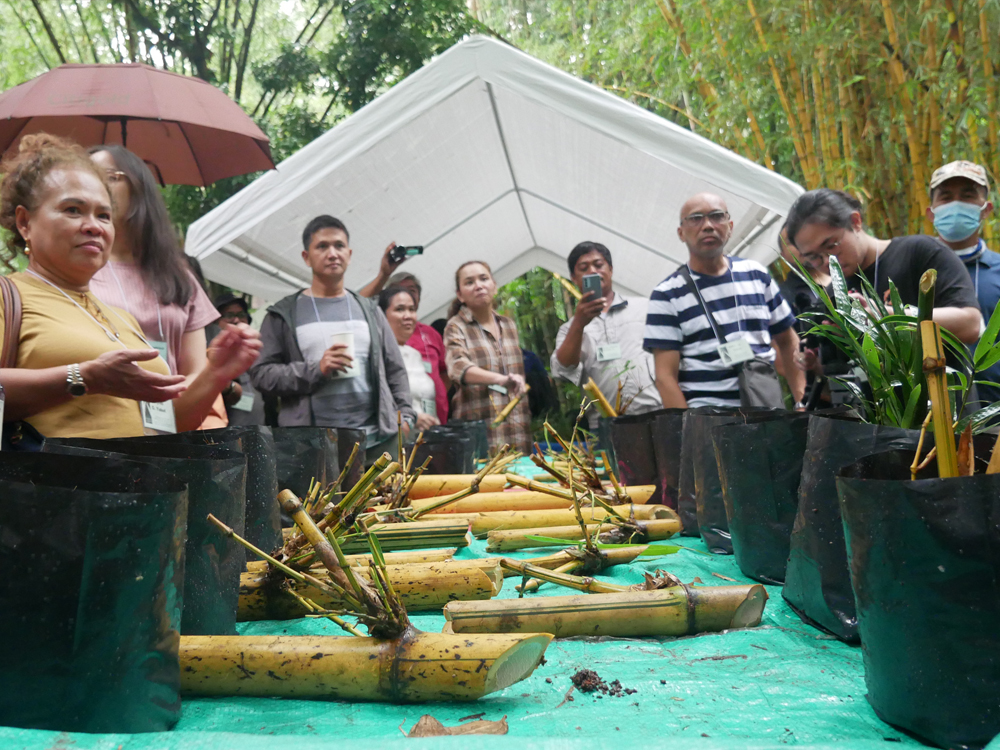The reputable bamboo plant is known consistently for its literary use when describing metaphorically the Filipino’s resilience and adaptability, as well as the evergreen fun fact about the rate at which it grows. Unbeknownst to many, it’s these properties that have transformed slowly the poor man’s timber into ‘green gold.’
To say there is no traction for bamboo would be an absolute lie. Concept stores and bazaars have showcased bamboo straws, speakers, and other bamboo ‘derivatives.’ Often, though, these products are branded as sustainable ‘alternatives’ - crafted and sold as more premium substitutes, ultimately catered to those who can afford much pricier but eco-friendly products. The truth is that bamboo, in all its forms, can and should be considered a primary option and not just a classy alternative. From bottom to top, the fastest growing plant on planet Earth is multifunctional, sustainable to grow, and loaded with environmental positives.
A five-hectare garden situated in the hilly parts of Sitio Tanza 2 in Antipolo City boasts a thick bamboo collective to the tune of 49 or so species. Its existence is premised upon the primary objective of growing and promoting bamboo. Annually for 23 consistent years, the bamboo garden would host an immersive lecture and training session that aims to impart value-adding knowledge about bamboo harvesting and propagation. The 2023 edition zeroed in on the plant’s longevity and what makes it such an effective resource without having to compromise efficiency and environmental health.
According to Engineer Jovito Elec of the Department of Science and Technology - Forest Products Research and Development Institute (DOST-FDRPI), training sessions and forums like this one provide the perfect opportunity for current and would-be bamboo growers to start prioritizing bamboo longevity and sustainability.
“Mas matagal sa inyo, mas maganda, and there are many proper techniques people don’t usually know of,” Elec says.
This is precisely the reason why learning initiatives are key to making these effective yet relatively unknown bamboo-growing procedures more accessible. Bamboo as a product may be famous, but the nitty-gritty of nurturing these plants still has knowledge gaps that need some bridging. One reason for this is the slightly unconventional form of the bamboo, a concern that involves learning new skills that cater to its unique physical properties - bent pole, hollow inside, and a pest-prone body due to its love for moisture.
MULTIFUNCTIONAL
It would be an understatement to suggest that the bamboo plant is a great provider. In an immersive tour around the bamboo garden, forest scientist and Taxonomy expert, Dr. Aida Lapis, detailed the primary distinctions of every bamboo type and its utility. The roots are strong enough to keep the ground intact and the soil heavily knitted, which helps prevent floods and mitigate the harms of soil erosion. The caliber of its sturdiness needs no further explanation, typically known for its culm’s (main stem) strength and credibility (even to elucidate the admirable trait of resilience.) Needless to say, fully-grown bamboo stems are just as reliable a construction component as other mainstream options like wood. Burning bamboo also produces fuel and charcoal, and its shoots, colloquially known as labong, are a good source of a kind of vegetable that’s made into creative Pinoy dishes.
No part of this plant will ever experience getting dumped or trashed. It is as functional as it can ever be, and that’s just the tip of the iceberg.
SUSTAINABLE
Its fast-growing nature is not the be-all and end-all of the bamboo’s most mainstream characteristic. Bamboo rewards its farmers with yields as early as four years after being planted, which is not a surprise given its ability to grow up to a meter a day and reach maturity between its fourth and sixth year.
It is way more sustainable than hardwood. Unlike the latter, bamboo can hit that ‘regen’ button even after getting cut. It regrows and reproduces shoots. Most importantly, a mature bamboo can annually give a portion of itself for harvestation - something hardwood can’t do.
“Ang bamboo, four years lang matured na agad ‘yon. Yung ci-nut mo, tutubuan ulit ng shoots, so hindi ka na mauubusan ng bamboo. Marami kang mapapakinabangan at magiging products, at marami kang magiging pera,” says Ms. Carolina ‘Kay’ Jimenez, owner and co-founder of the bamboo garden in Antipolo City.
LOADED WITH ENVIRONMENTAL POSITIVES
The bamboo is not only life-giving, it is also life-saving. Bamboo’s strong foundation begins with its strong roots that are able to hold the ground together and prevent erosion, particularly in slopey areas where disasters are commonplace. According to Ms. Kay, studies actually suggest that bamboo absorbs carbon dioxide 400 times better and produces 35 percent more oxygen than most slow-growing forest trees. And because it's renewable and fast-maturing, it might just be the game changer we need for our concerted but laboriously exhausted efforts in combatting climate change.
Bamboo’s potential is arguably endless. Once planted, like energy, its function cannot be destroyed nor does it have to be created again - it can only be transformed. Lapis puts it aptly, “In all walks of life, we are dependent on things that are also provided by bamboo, so all the more we have to love and propagate [the bamboo plant] so its uses can be maximized by the Filipino people.



